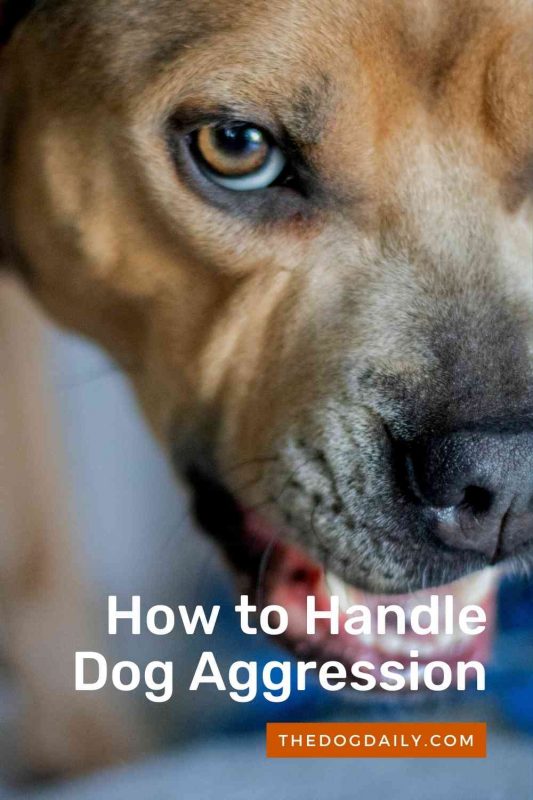Dog Aggression
When a dog becomes aggressive, it can be challenging to know how to act. People’s automatic aggression is often exactly what you shouldn’t do, which only makes the dog more aggressive and likely to bite. Like many behavioral problems, dog aggression is often easy to handle if you know-how. Many dogs are aggressive for a reason. If that underlying reason can be handled, then the aggression usually fixes itself. We’ll help you get a handle on your dog’s aggression in this article without putting anyone in danger or potentially making your dog even less trusting.
Understand the Reasons for Aggression in Dogs
While dogs can be aggressive for many different reasons, fear aggression is at the top of the list. Many usually docile canines will suddenly become aggressive when they are scared. Fear aggression is most common in smaller dogs, as they are more likely to be injured and afraid of seemingly everyday situations. Most dogs that bite are just scared – not aggressive.
Pain-elicited aggression occurs when the dog is in pain. Many dogs don’t want to be touched or moved when they are sick, so they may resort to aggression to make you leave them alone. If a friendly dog suddenly becomes aggressive, it is likely because they are in pain. Some breeds of dogs are territorial and may show aggression when unfamiliar faces enter. Shepherd dogs, for example, are known for this behavior. Many breeds will be protective of their owners, even if there isn’t much to protect them from. Dogs that are not adequately socialized are particularly prone to both of these aggression types.
These are the most common types of aggression exhibited by dogs towards people. Some dogs are also aggressive towards other animals. Aggression towards other animals can be due to territorial or protective instincts, making the dog act against other canines. However, it can also be due to predatory aggression, which is especially common among dogs with a strong prey drive. Sex-related aggression can occur in intact males and females that are in heat. Even in domestic situations, dogs will fight for mates.
What You Should NOT Do When Your Dog is Aggressive
You should never reprimand your dog for growling. Growling does not hurt anyone and is the dog’s way of communicating their discomfort. Growling is extremely helpful in letting others know that your dog isn’t happy with the situation, which prevents biting. Growling also makes it easier to tell why your dog is aggressive, as you can pinpoint the situations and targets that make the dog uncomfortable.
Most importantly, though, if you reprimand a dog for growling, you eliminate the only bite warning the dog has. A dog that has been taught not to growl will simply jump to biting instead. This is extremely dangerous and may make it look like the dog is biting at random. Assess When your dog starts showing aggression, it is essential to assess the reason why. Often, dogs aren’t just naturally aggressive. Instead, they’re aggressive for a reason – and it isn’t always the dog’s fault.
For instance, an active breed may become aggressive if they are not exercised enough. If you adopt a breed that needs more exercise, you need to ensure that you give them the exercise they need. Otherwise, all of that energy may be channeled into aggression.
Many dogs that exhibit aggression simply aren’t socialized enough. Carefully socializing them, especially with dog training classes, is an excellent way to combat this aggression. Once they learn there is nothing to fear with strangers and new situations, most dogs calm down quite quickly. We recommend socializing any dog that shows aggression – even if that doesn’t seem to be the root cause.
Managing Dog Aggression
Visit the Vet
A dog that suddenly becomes aggressive may have an underlying condition. While the pain will make a dog a bit grumpy, hormonal disorders and physiological problems can also be to blame. Some dogs with dementia become aggressive as they simply forget that you’re there, which makes your sudden presence a bit startling.
Any suddenly aggressive dog should be taken to the vet so the root cause can be determined. Otherwise, the aggression is likely to stick around and may even worsen as the dog gets sicker.
Use Behavior Modification
For most causes of canine aggression, behavior modification training will be necessary. If your dog’s aggression is extreme, you may need to work with an expert on this. Dogs that simply are uneasy around strangers, other dogs, or new situations can be socialized and trained by a trainer. If you have some experience training dogs, you may even be able to do this yourself. However, using an outside trainer has the obvious benefit of getting your dog out of the house, which is exactly what they need to overcome fear and territorial aggression.
Understand Your Dog’s Limitations
While dog breed is often not as big of a factor in aggression as many people think it is, it does occasionally matter. Chow Chows are known for dog aggression, especially to the same-sex. You shouldn’t adopt a male Chow Chow if you already have a male dog. Choose a breed that fits your situation and lifestyle.
At the same time, if you adopt a dog known for being territorial, be sure you socialize them properly as puppies. You shouldn’t adopt a dog that needs heavy socialization if you do not have the time to socialize them.
However, you shouldn’t give into common misconceptions regarding dog breeds. American Staffordshire Terriers are not any more aggressive than most other dogs, for instance. However, they are more active and energetic. This energy can be channeled into aggression if they are not exercised properly. With that said, dogs like Labrador Retrievers need just as much exercise and are often considered very friendly dogs.
Article written by Author: Steffi Trott

